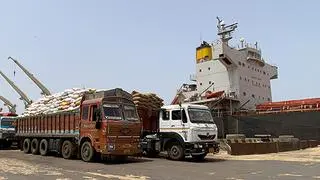BRICS, comprising Brazil, Russia, India, China and South Africa, was envisioned as a powerful economic grouping but has faced challenges in forming an effective coalition. Diverse economic structures, varying levels of development, and differing policy priorities hindered the alignment of economic, trade, financial, and banking policies. Despite discussions about creating a new currency, the realisation of a BRICS currency remains a hyped concept. The focus should be on understanding the prerequisites of an international currency and addressing the issues surrounding the launch and operationalisation of a BRICS currency.
Establishing an international currency requires stability, acceptance and widespread use. Prerequisites include a stable ‘store-value’, wide acceptance, easy convertibility, association with a major economies, stable political system, trust and confidence, liquidity, and a robust financial infrastructure. The BRICS currency lacks all these as of now, including coordination in areas such as exchange rate regimes and monetary policies.
The realisation of a BRICS currency may seem like a distant dream due to the significant socio-economic divergences among the countries in the group. The lack of coordination in monetary, fiscal, financial and banking policies, as well as lack of coordination for managing economic indicators such as inflation, interest rates, exchange rate and capital account convertibility present considerable challenges. However, rather than pursuing a grand vision immediately, BRICS countries could take incremental steps towards achieving their dream of a common currency.
These steps could involve settling trade in local currencies, establishing currency swap arrangements, harmonising financial markets and governance architectures, and setting up clearing houses and other associated bodies to instil confidence among users. For instance, fostering common payment system like SWIFT, surveillance mechanism like FATF, monitoring system like Basel Committee on Banking Supervision (BCBS), and settlement and reconciliation system like Bank for International Settlements (BIS).
By encouraging trade settlement in local currencies, BRICS countries can reduce reliance on major reserve currencies and enhance economic cooperation within the group. Currency swap arrangements can facilitate trade and investment by providing liquidity in times of financial stress.
Additionally, the BRICS countries should focus on enhancing cooperation on market access and trade facilitation, working towards removing barriers and promoting a seamless flow of goods, services, and investments within their combined economic size. By strengthening economic ties and deepening regional integration, the BRICS nations can create a solid foundation for future monetary collaboration.
Financial architecture
BRICS countries should first foster a sound financial architecture which can help them benchmark for pegging of BRICS currency. There are inherent risks with the proposed commodity-price linked ‘price-discovery’ of BRICS currency. The proposal to back the BRICS currency with a basket of commodities like gold, rare earth minerals, and energy products presents challenges and potential opposition from India and Brazil, whose strengths are in service and agricultural products, respectively.
This approach primarily reflects the economic strengths of countries such as Russia, China, and South Africa, which are rich in these commodities and essentially do not reflect the intrinsic value of the proposed currency based on economic strengths of India.
It may result in an imbalance within the valuation framework, as the economic fundamentals of India and Brazil may not be adequately represented. Additionally, the pricing mechanisms of proposed commodities such as gold, rare earth and energy products are often based on Western benchmark indices (WTI, BRENT, NYME, and LME), which could indirectly influence the exploration of the true and risk-free intrinsic value of BRICS currency and undermine its goal of achieving greater autonomy.
The BRICS countries may have limited control over such commodity pricing and benchmarking of Western indices, raising concerns about the stability and independence of the currency’s valuation. Moreover, commodity prices are volatile and subject to various global factors, posing risks to the stability and value of the BRICS currency. These factors highlight the complexities and potential drawbacks associated with using commodities to determine the intrinsic value of the proposed BRICS currency.
Alternatively, a BRICS currency model based on existing convertible currencies such as the US dollar and other freely convertible currencies, is also not suitable. These currencies reflect the geo-economic realities of Western countries, which goes against the purposed BRICS currency, meant to address their weaknesses and serves the interest of emerging countries and Global-South. As the currency values are influenced by various factors, including economic indicators, monetary policies, political stability, international trade dynamics, and market sentiment, these factors can rapidly change, resulting in significant fluctuations in exchange rates for a BRICS currency. This would not accurately reflect the economic fundamentals of the BRICS countries but rather those of the Western currencies.
Moreover, exchange rates are susceptible to speculative trading, geopolitical events, global economic trends, and external factors, beyond the control of individual BRICS countries. Relying solely on other currencies would expose the BRICS currency to these external influences. Learnings from the South-East Asian currency crisis of 1998, it becomes evident that such a model would provide undue advantage to large currency manipulators based in western financial centres. Therefore, the BRICS countries must address these challenges of putting in place a sound financial architecture and governance system before introducing a currency suitable for international trade and payment settlements.
The writer is Professor, IIFT, New Delhi. Views are personal








Comments
Comments have to be in English, and in full sentences. They cannot be abusive or personal. Please abide by our community guidelines for posting your comments.
We have migrated to a new commenting platform. If you are already a registered user of TheHindu Businessline and logged in, you may continue to engage with our articles. If you do not have an account please register and login to post comments. Users can access their older comments by logging into their accounts on Vuukle.